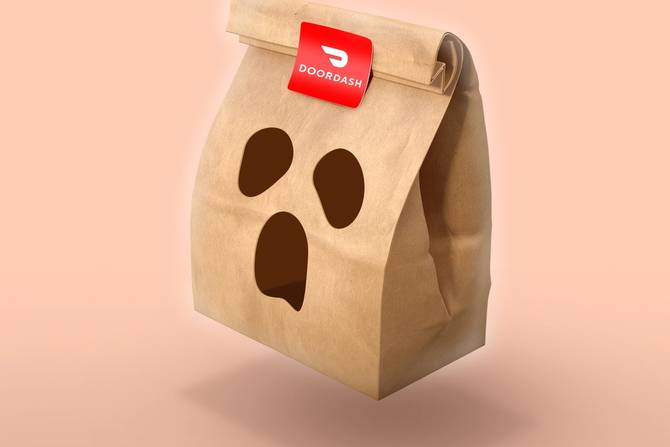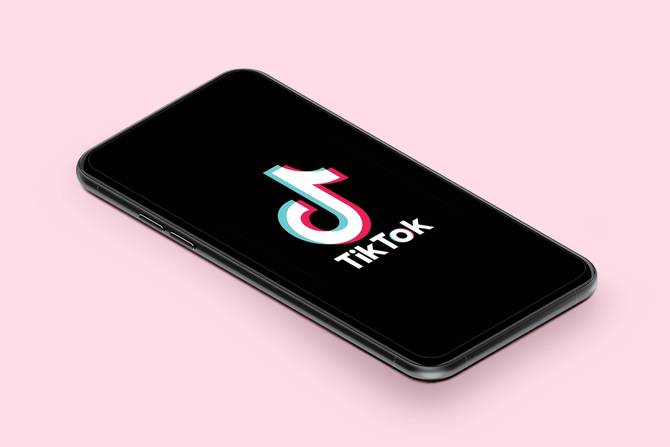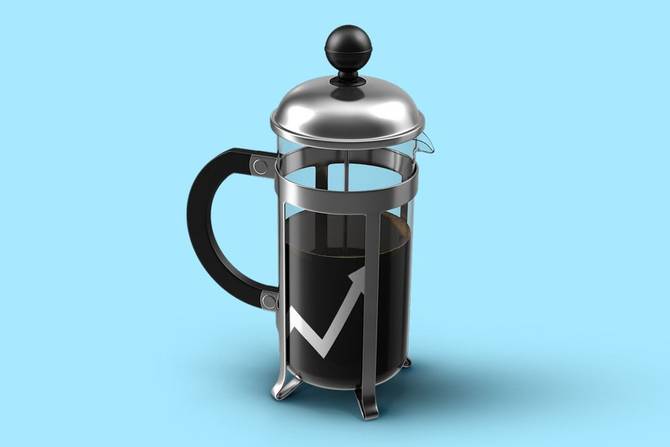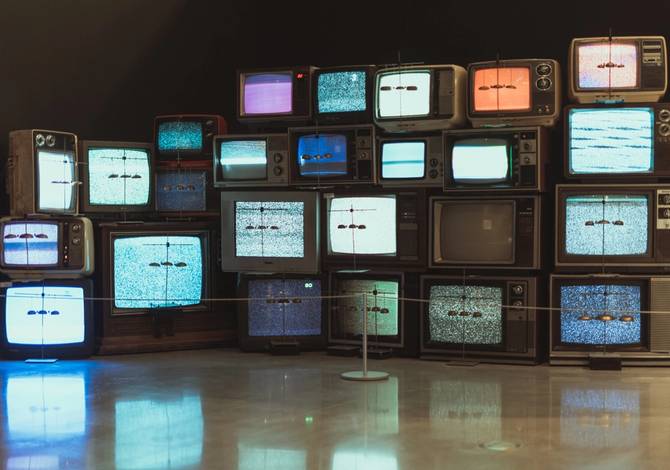Hello and happy Friday! We made it another week. Phew. As we continue to evolve and improve our coverage, we want to learn a pretty basic, but important thing: Are you a B2B or a B2C marketer? If you’re a B2B marketer, click here. If you’re a B2C marketer, click here. Have a great weekend, and see ya Monday!
In today’s edition:
- Restaurants where you can’t eat
- TikTok’s new brand-safety tools
- “Help wanted” sign in the form of a Cameo
— Zaid Shoorbajee, Phoebe Bain
|
|
|
Francis Scialabba
Things aren’t always what they seem. If you’ve recently had food delivered from a restaurant you had never heard of before, there’s a chance it came from a ghost kitchen or a virtual brand.
What’s a  kitchen? Essentially, they’re delivery-only restaurants without customer-facing locations. Sometimes they’re even chains that use their existing kitchens to operate separate, virtual brands. You think you’re ordering from a neat new pizza place, but it’s actually Chuck E. Cheese. kitchen? Essentially, they’re delivery-only restaurants without customer-facing locations. Sometimes they’re even chains that use their existing kitchens to operate separate, virtual brands. You think you’re ordering from a neat new pizza place, but it’s actually Chuck E. Cheese.
Ghost kitchens can present an opportunity for restauranteurs to introduce a new brand without the overhead of running an in-person dining experience. Without physical storefronts, these brands have to take their marketing online, relying on social media and delivery apps to get noticed.
Delivery-only restaurants are certainly not new, but they’ve gained traction in recent years largely due to the dominance of delivery apps and the need for contactless service in the pandemic. They’re often started by individual entrepreneurs—MrBeast Burger, for instance, was started by a YouTuber—as well as established chains like Chick-fil-A and Red Robin.
Whoever’s actually behind them, they appear to be here to stay. Datassential, a food market research firm, estimates that there are more than 13,000 ghost kitchens operating in the US, though it told us the numbers are “notoriously hard to track.” Globally, the ghost-kitchen market was around $43 billion right before the pandemic and is expected to reach over $71 billion by 2027, according to Statista.
Without physical storefronts, ghost kitchens rely on “digital real estate” to get the word out, Corey Manicone, CEO of ghost-kitchen technology platform Zuul, told Marketing Brew.
- “Having your own channel that obviously drives engagement with consumers, but also getting it in front of folks that may not be following you is also key,” Manicone said. It also means paying “GrubHub, DoorDash, UberEats, all of those folks as much money as you can to be at the top of the list.”
- Manicone said he also advises ghost kitchens to try to then convert customers from those apps to order from the business directly in order to avoid high commission fees.
And since you can’t control the dining ambiance when you don’t have an actual dining room, ghost kitchens can invest in making their packaging part of the experience.
- If you send everything in a generic brown bag, “Your brand is really only the food itself. People eat that, and it’s disappeared and it’s gone,” Haley Kabus, associate director of strategy at The Culinary Edge, a food and restaurant consulting firm, told us.
- Packaging “is this key place to communicate what your brand is about and build your identity. But then it’s also super shareable on social,” she added.
Click here to read more on how large food chains use ghost kitchens to expand their reach, plus how customers actually feel about ghost kitchens.—ZS
|
|
|
Francis Scialabba
On Tuesday, TikTok announced a host of new features and partnerships in hopes of attracting more advertisers to the app. In the mix was a partnership with Integral Ad Science to help marketers ensure their videos are appearing in appropriate contexts.
IAS said that this brand-safety tool, which is integrated into TikTok’s ad platform, uses “proprietary frame-by-frame video, audio, and text classification technology that IAS specially engineered to handle a high volume of videos.”
- The goal is for marketers to be able to more confidently run ads in TikTok’s For You page, IAS said.
-
Beyond brand safety, TikTok unveiled new tools to aid marketers in ad measurement. That includes a partnership with DoubleVerify, expanding on a similar integration with Oracle’s Moat.
The new features come as TikTok tries to earn more trust from marketers. According to a recent study by Kantar, marketers see TikTok as the most “innovative,” but least “trustworthy” platform when compared with others like YouTube, Google, and Facebook. And according to a New York Times report citing eMarketer data, TikTok is on track to hit ~$1.3 billion in ad sales this year.
Rapid virality is one of TikTok’s strong suits for both users and marketers, but that has given way to problems like the spread of vaccine misinformation.
- “TikTok is a brand-safety fiasco. Conspiracy theories, disinformation, and hate run rampant on the platform,” Claire Atkin, cofounder of the consultancy Check My Ads told Marketing Brew.
+1: TikTok also announced that it passed 1 billion monthly users. It’s a big base that generates tons of trends for brands to jump on, but some have gotten so out of hand that the platform cut them off. The app recently banned the “milk crate challenge” because it led to injuries, as well as the “devious lick” challenge because it encouraged stealing.—ZS
|
|
|
|
You’re thinking it, we’re thinking it, we're just gonna come right out and say it: That old marketing stack is embarrassing. Alright, that’s a little harsh, but it is due for an upgrade.
Now, as with any big decision, one can’t afford to take a step in the wrong direction.
Lean on Listrak for a little help—they’re a leading digital marketing platform trusted by 1,000+ retailers and brands, and they know all the dos and don’ts when it comes to making an upgrade.
Their latest guide is stacked high with insights from across their client base and literally thousands of evaluations.
See how brands like Vineyard Vines, Kate Somerville, 7 for All Mankind, and Academy Sports go about picking the right tech partner.
Download Listrak’s guide today.
|
|
|
Giphy
Turns out agencies are desperate to fill open roles, and the only person who can save them is NSYNC’s Lance Bass.
Marketing agency Digitas says they recently became the first company to partner with Cameo for Business—the platform where you can pay to get your favorite living celebrity to record a specialized message—to create star-studded recruiting videos for companies.
Here’s how it works:
-
Digitas and Cameo for Business collaborate with celebrities like singer-songwriter Todrick Hall and, of course, Lance Bass, to create videos for the agency’s owned channels.
-
For instance, in his Cameo for Digitas, Bass references NSYNC songs, telling the camera, “Say bye bye bye to the job that’s tearin’ up your heart and hello to a career at Digitas.”
- Cameo for Business functions the same way as the regular platform (i.e., Cameo) except the stars charge “five to ten times” their usual prices, Digitas’s head of recruiting Jamie Gribin told Marketing Brew.
-
For instance, Bass charges $249 a video for personal use and $1,000 for business, per his Cameo page.
Results: Gribin explained that over the past two weeks of running the Cameo campaign, Digitas has seen a 38% increase in applicants for its 170 open roles, though she declined to provide exact figures. She said she was especially happy with the results being that Digitas only spent “between 2% and 5%” of its yearly recruiting budget on the effort.
Those 170 openings range from junior-level employees all the way up to the EVPs.
“Our goal,” Gribin said, “is to appeal to a really wide range of talent using celebrity.”
She added that Bass’s recent appearance on Bachelor in Paradise made him the “ideal choice” to kick off the campaign, explaining that while the show introduced him to Gen Z, “millennials and Gen X would clearly remember him from boy-band days in the 90s and early 2000s.”
+1: On Thursday, Twitter announced Twitter for Professionals, which provides additional platform tools for those who convert their accounts.—PB
|
|
-
McCann Worldgroup is hiring a longtime Nike exec as its president and top creative.
-
Facebook was grilled by senators about its handling of internal research showing mental-health harms to teen girls
-
ViacomCBS is bringing on VideoAmp as an audience-measurement partner for linear viewers, tracking advertising reach.
-
Anheuser-Busch InBev, one of the world’s largest ad spenders, is going into agency review.
-
The Super Bowl halftime show will be headlined by five performers: Dr. Dre, Snoop Dogg, Kendrick Lamar, Mary J. Blige, and Eminem. TL;DR, we weren’t picked
 . .
|
|
|
|
Where there’s comfort, there’s connection. From shopping habits to life at home, work, and beyond, each individual’s comfort level is different as we get through the pandemic. Some want new experiences, others yearn for the familiar. As a result, it’s important to meet folks where they are. The 2021 Consumer Intel Report from Vericast includes four actionable steps you can take toward authentic engagement and building a stronger brand. Download it here.
|
|
|
Francis Scialabba
There are a lot of bad marketing tips out there. These aren’t those.
Google Ads: That big search- engine company has a new budget- report tool to help you visualize your campaign spending behavior. Here’s what you can do with it.
Social media policy: Do your employees tweet a lot? Nothing wrong with that, right? Right? Anyway, this guide tells you how to write an effective social media policy.
Ad spend: Media buyers are spending bigger and bigger pieces of their budgets on connected TV campaigns. But CTV newcomers might face an unfamiliar set of challenges. This might help.
Red alert: There’s an easy way to reach podcast listeners. RedCircle lets you target the right demographics and measure the right metrics across thousands of independent shows, all with just a few clicks. Learn how to plug and play your brand here.*
*This is sponsored advertising content
|
|
Catch up on a few Marketing Brew stories you might have missed.
|
|
AD TECH COMPANY OR FICTIONAL TECH COMPANY?
|
Unsplash
There are a lot of questionably named companies in the murky marketing universe. Two of these are real ad tech companies. The rest are fake tech companies from TV shows. Can you distinguish them? Keep scrolling for the answers.
- Hooli
- Choozle
- WUPHF
- TapClicks
- SPRQ Point
|
|
AD TECH COMPANY OR FICTIONAL TECH COMPANY ANSWERS
|
|
Hooli is an analogue to Google in Silicon Valley. WUPHF is an attempted messaging startup in The Office. SPRQ Point is a developer of apps and smart devices in Zoey’s Extraordinary Playlist.
|
|
|
Written by
Phoebe Bain and Zaid Shoorbajee
Was this email forwarded to you? Sign up
here.
WANT MORE BREW?
Industry news, with a sense of humor →
-
HR Brew: analysis of the employee-employer relationship
Tips for smarter living →
 Podcasts →
Business Casual
and
Founder's Journal
Podcasts →
Business Casual
and
Founder's Journal
Accelerate Your Career →
-
MB/A: virtual 8-week program designed to broaden your skill set
|
ADVERTISE
//
CAREERS
//
SHOP
//
FAQ
Update your email preferences or unsubscribe
here.
View our privacy policy
here.
Copyright ©
2021
Morning Brew. All rights reserved.
22 W 19th St, 8th Floor, New York, NY 10011
|
|











